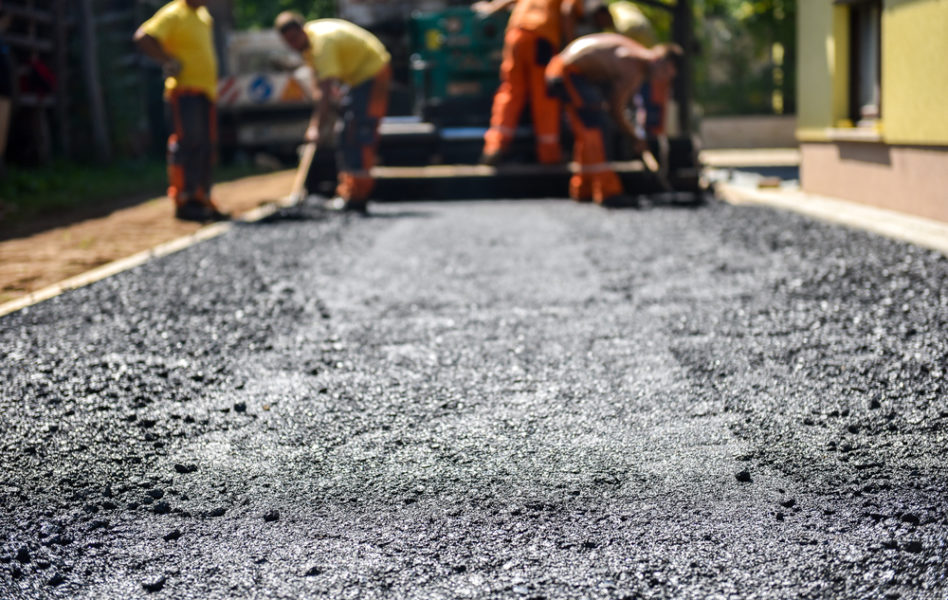Opening the Secrets of Hot Mix Asphalt Technology
Exploring the midsts of warm mix asphalt innovation uncovers a globe where precise procedures and exact solutions merge to shape our roadways and facilities. The fusion of fillers, aggregates, and binders isn't merely a building and construction task but a calculated orchestration of toughness and efficiency.
Relevance of Hot Mix Asphalt
Warm Mix Asphalt plays a vital role in modern-day facilities growth due to its longevity and cost-effectiveness. As the most generally used leading material for roadways, freeways, and auto parking lots, Hot Mix Asphalt supplies a range of benefits that add to its importance in building projects. One crucial benefit is its ability to stand up to rush hour tons and rough climate condition, providing a trusted and resilient surface for transportation networks. Additionally, Hot Mix Asphalt is cost-efficient in both initial building and long-lasting upkeep, making it a recommended choice for numerous facilities jobs.
The sturdiness of Hot Mix Asphalt stems from its make-up, which includes accumulations, binder, and filler products that are carefully chosen and mixed to fulfill particular performance needs. In general, the importance of Warm Mix Asphalt in infrastructure growth can not be downplayed, as it proceeds to be a cornerstone of modern-day building and construction methods.
Components of Asphalt Mixes
The make-up of asphalt mixes includes carefully chosen aggregates, binder, and filler materials that are essential for attaining particular efficiency requirements. Aggregates are the key component of asphalt blends, offering toughness and stability. These accumulations can be all-natural, such as gravel or smashed rock, or synthetic, like recycled materials from old sidewalks. The binder, commonly asphalt or asphalt cement, holds the accumulations with each other and offers adaptability and sturdiness to the mix. The option of the binder is essential as it directly affects the mix's performance in various weather. Fillers, such as hydrated lime or Portland concrete, are made use of to boost the mix's workability and aging resistance. Angled Parking.
The combination and proportion of these components play a substantial duty in identifying the top quality and efficiency of the asphalt mix. Designers meticulously develop the mix to fulfill specific needs, considering factors like traffic quantity, environment conditions, and pavement lifespan. Proper selection and harmonizing of accumulations, binder, and fillers are crucial for developing long lasting, durable asphalt sidewalks.
Mixing and Production Techniques

As soon as the accumulations are picked, the binder, often asphalt cement, is included in bind the materials together. The binder's quality and quantity significantly impact the mix's flexibility, resistance, and strength to ecological aspects. Furthermore, fillers like hydrated lime or Rose city concrete might be included to boost details features of the asphalt mix, such as its workability or wetness resistance.
During production, the accumulations and binder are heated up, usually between 250-325 ° F(121-163 ° C ), to facilitate blending and make certain appropriate finishing of the aggregates. The blending procedure should be comprehensive to attain an uniform mix that advertises the preferred efficiency attributes of the asphalt. Different techniques, such as batch blending or drum blending, are utilized to achieve top notch and regular asphalt mixes for construction tasks.
Elements Influencing Asphalt Performance
Factors affecting asphalt performance include a variety of variables that affect the longevity, longevity, and general quality of asphalt pavements. One vital element is the top quality of materials made use of in the asphalt mix. The kind and resource of accumulations, the binder high quality, and the ingredients all play a substantial YOURURL.com role in identifying the efficiency of the asphalt sidewalk. The gradation of aggregates is crucial as it impacts the mix's resistance, security, and workability to rutting and splitting.
Ecological conditions likewise influence asphalt performance. Temperature level variations, visit here wetness infiltration, and web traffic lots can all affect the architectural integrity of the sidewalk. Layout considerations, such as sidewalk density and drain, are crucial in guaranteeing the lasting efficiency of the asphalt pavement. By very carefully considering these engineers, professionals and aspects can optimize asphalt performance and enhance the service life of pavements.
Sustainable Practices in Asphalt Technology

Furthermore, the development of warm-mix asphalt (WMA) technologies has actually gotten traction over the last few years. WMA permits the manufacturing and placement of asphalt mixes at reduced temperature levels compared to traditional hot-mix asphalt, causing lowered energy consumption Get More Information and greenhouse gas exhausts. Moreover, using permeable asphalt blends can help minimize stormwater overflow issues by permitting water to infiltrate through the pavement and right into the ground, advertising natural water purification and charge procedures. By applying these sustainable techniques, the asphalt market can add to developing a more eco-friendly and durable facilities network.
Final Thought
In final thought, hot mix asphalt innovation plays a crucial role in modern infrastructure advancement because of its longevity and cost-effectiveness. By thoroughly stabilizing elements, utilizing appropriate blending methods, and thinking about different aspects, designers can produce premium asphalt mixes that endure rush hour loads and harsh climate condition. Embracing lasting techniques, such as utilizing recycled products and warm-mix innovations, further boosts the ecological friendliness of asphalt technology.
Blending and manufacturing methods in hot mix asphalt technology entail the exact combination and handling of accumulations, binder, and fillers to create a sturdy and high-performance asphalt mix.Aspects influencing asphalt efficiency include a range of variables that affect the longevity, durability, and overall top quality of asphalt pavements. Lasting practices in asphalt modern technology include various efforts aimed at lowering the environmental influence of asphalt production and paving processes. By including recovered asphalt sidewalk (RAP) and recycled asphalt roof shingles (RAS) right into new asphalt blends, the market can significantly minimize the consumption of raw products and energy, while also lowering landfill waste.
WMA permits for the production and positioning of asphalt mixes at reduced temperature levels compared to typical hot-mix asphalt, resulting in decreased power consumption and greenhouse gas discharges.